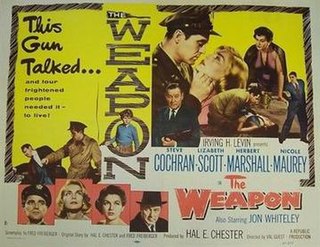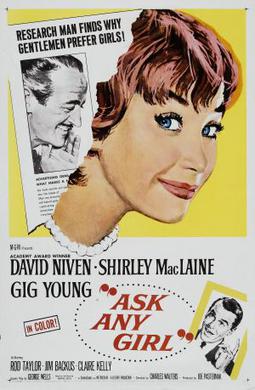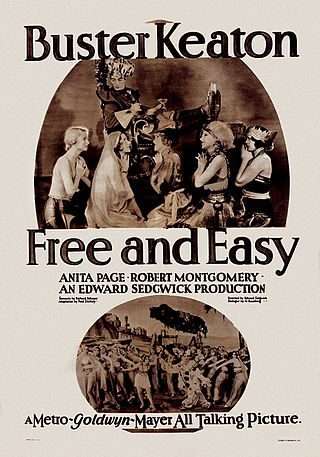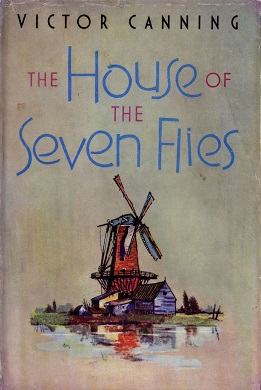
Turner Classic Movies (TCM) is an American movie-oriented pay-TV network owned by Warner Bros. Discovery. Launched in 1994, Turner Classic Movies is headquartered at Turner's Techwood broadcasting campus in the Midtown business district of Atlanta, Georgia.

Village of the Damned is a 1960 British science fiction horror film by Anglo-German director Wolf Rilla. The film is adapted from the novel The Midwich Cuckoos (1957) by John Wyndham. The lead role of Professor Gordon Zellaby was played by George Sanders.

Robert Jolin Osborne was an American film historian, television presenter, author, actor and the primary host for more than 20 years of the cable channel Turner Classic Movies (TCM). Prior to hosting at TCM, Osborne had been a host on The Movie Channel, and earlier, a columnist for The Hollywood Reporter. Osborne wrote the official history of the Academy Awards, published in 1988.

Murder Most Foul is the third of four Miss Marple films made by Metro-Goldwyn-Mayer. Loosely based on the 1952 novel Mrs McGinty's Dead by Agatha Christie, it stars Margaret Rutherford as Miss Jane Marple, Charles Tingwell as Inspector Craddock, and Stringer Davis as Mr Stringer. The story is ostensibly based on Christie's novel, but notably changes the action and the characters. Hercule Poirot is replaced by Miss Marple and most of the other characters are not in the novel.
Anthony Mabron Burton was an American actor and boxer. He was known for his role as Tony "Duke" Evers in the Rocky films.

Party Girl is a 1958 American film noir directed by Nicholas Ray and starring Robert Taylor, Cyd Charisse and Lee J. Cobb. Filmed in CinemaScope, it was the last film Charisse did for Metro-Goldwyn-Mayer, and the next-to-last film Taylor did for the studio; they were MGM's last two remaining major contract stars.

Rogue Cop is a 1954 American film noir directed by Roy Rowland, based on the novel by William P. McGivern, and starring Robert Taylor, Janet Leigh, and George Raft.

All the Brothers Were Valiant is a 1953 Technicolor adventure drama film produced by Metro-Goldwyn-Mayer and directed by Richard Thorpe. The film's screenplay was written by Harry Brown and based on the 1919 novel All the Brothers Were Valiant by Ben Ames Williams. The music score was led by Miklós Rózsa and the cinematography by George J. Folsey.

The Scapegoat is a 1959 British mystery film based on the 1957 novel of the same name by Daphne du Maurier, and starring Alec Guinness, Nicole Maurey and Bette Davis.

Courage of Lassie is a 1946 American Technicolor MGM feature film featuring Elizabeth Taylor, Frank Morgan, and dog actor Pal.

Busman's Honeymoon is a 1940 British detective film directed by Arthur B. Woods. An adaptation of the 1937 Lord Peter Wimsey novel Busman's Honeymoon by Dorothy L. Sayers, Busman's Honeymoon stars Robert Montgomery, Constance Cummings, Leslie Banks, Googie Withers, Robert Newton and Seymour Hicks as Mervyn Bunter.

The Weapon is a 1956 black and white British thriller film directed by Val Guest and starring Steve Cochran, Lizabeth Scott, Herbert Marshall, and Nicole Maurey. It was made by Republic Pictures. Its themes were originally explored in the 1951 British film The Yellow Balloon.

Ask Any Girl is a 1959 American romantic comedy film directed by Charles Walters and starring David Niven, Shirley MacLaine, and Gig Young. It was produced by Metro-Goldwyn-Mayer and based on a novel by Winifred Wolfe.

Nicole Maurey was a French actress, who appeared in 65 film and television productions between 1945 and 1997.

Doctor Blood's Coffin is a 1961 British horror film produced by George Fowler, and directed by Sidney J. Furie. It stars Kieron Moore, Hazel Court, and Ian Hunter. The story is that of young biochemist Dr Peter Blood, who returns to his hometown in Cornwall with the belief that he can selectively restore life by transplanting the living hearts of 'undeserving' people into dead people who 'deserve' to live. The film is significant for being one of the first two zombie films to be shot in colour, the other being the obscure 1961 American film The Dead One, and for its early portrayal of zombies as homicidal rotting cadavers. The movie was released in the UK in January 1961 and in the US in April of that year, where it was on a double bill with another British film, The Snake Woman (1961).

The Lone Wolf Meets a Lady is a 1940 American drama directed by Sidney Salkow, starring Warren William, Eric Blore and Jean Muir.

Free and Easy is a 1930 American pre-Code comedy film starring Buster Keaton. It was Keaton's first leading role in a talking motion picture.

Joe Smith, American is a 1942 American spy film directed by Richard Thorpe and stars Robert Young and Marsha Hunt. The film, loosely based on the story of Herman W. Lang, and the theft of plans of a top-secret bombsight, is the account of a worker at an aviation factory who is kidnapped by enemy spies. The opening credits contained the following written prologue: "This story is about a man who defended his country. His name is Joe Smith. He is an American. This picture is a tribute to all Joe Smiths."

Buried Loot is a 1935 American crime film, the first installment of 50 shorts in the Crime Does Not Pay series produced by Metro-Goldwyn-Mayer and released to theaters between 1935 and 1947. Directed by George B. Seitz, Buried Loot stars Robert Taylor in his first leading role for MGM, although he and the rest of the cast and crew are uncredited during the film's presentation.

The House of the Seven Flies is a 1952 thriller novel by the British writer Victor Canning. The plot revolves around a quarter of a million pounds worth of diamonds stolen from an Amsterdam bank, and the death of the man to whom ex-British Army officer Edward Furse rents out his boat.



















